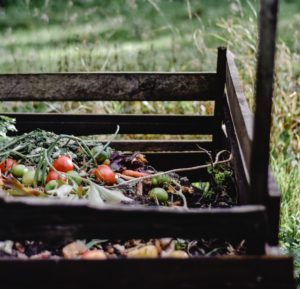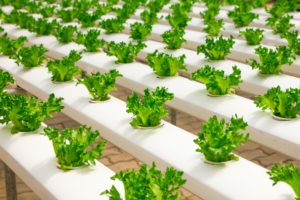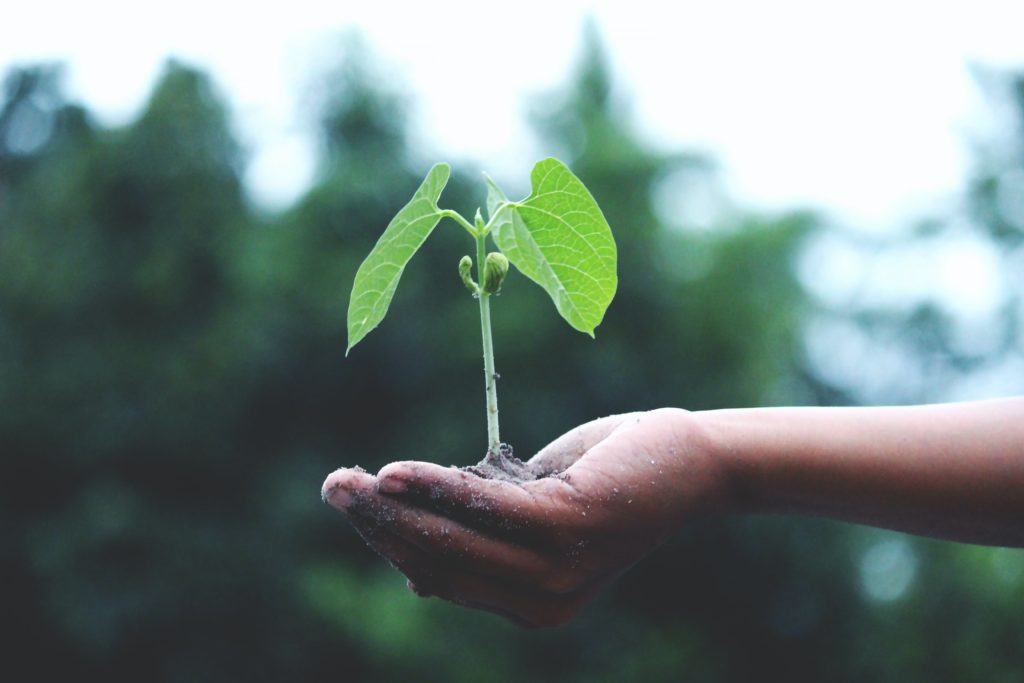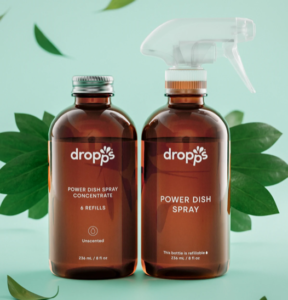Living a more sustainable life is a goal we should all shoot for. As climate and environmental issues continue to worsen, we can all be part of the solution. There are many easy ways to get started, and now is a great time to start living sustainably. We’ll cover ways to reduce waste, grow your own food, and live a carbon-neutral life. Stick around to the end to learn how you can put your carbon offsetting on autopilot.
1. Reduce The Waste You Produce

Rethinking how we consume is an excellent way to reduce the waste we generate every day. It will help eliminate single-use plastics and reduce harmful chemicals that pollute the environment.
To have the biggest impact, consider products that you use daily. Some good examples are cleaning supplies, food storage containers, and clothing. Here are a few ways you can reduce your everyday waste.
A Greener Way To Clean
Cleaning supplies like dish & laundry soap create a ton of waste. First off, they come in bulky plastic containers that end up in the trash. This is especially true for bottles with a spray nozzle. When the soap is gone the bottle and spray nozzle are tossed, even though they are still useful. Bottles like this are a huge waste of plastic.
On top of the plastic waste, they create unnecessary carbon emissions. A high percentage of these products is water, so you’re paying to ship what you could get out of the tap. It’s time to switch to a greener way to clean. Start reusing the bottle, and reduce shipping weight by checking out companies like Dropps. They sell cleaning products with less waste, pollution, and toxic chemicals. Instead of buying full bottles of soap (and mostly water), you’ll get soap concentrate shipped to you that can be used to refill the bottle. Just add your own tap water and bam. You’ve just reduced your plastic waste & carbon footprint. They’ve also got sustainably sourced laundry pods, dishwasher detergent, hand soaps, and more.
There are also small ways you can reduce your cleaning waste right now. An easy one is to utilize rags & towels rather than reaching for a paper towel anytime there is a spill. Since cloth products can be washed and reused, waste is reduced. Pair that with the sustainable soaps above, and you’ll be a green cleaning machine in no time!
Sustainable Food Storage That Lasts
Food storage containers are also a huge polluter. Throwing leftovers in a single-use ziplock or plastic wrap before refrigerating food is a wasteful activity that we can stop. Reduce your waste by purchasing reusable food containers. I prefer glass containers that are microwave safe and don’t give food that weird taste that plastic does. They also last longer and don’t leach harmful chemicals into your food.

The good news is that you don’t have to go buying new 50 new food storage containers. Upcycling is a great way to reuse glass containers you’ve already purchased. Anytime you finish off a jar of pickles or spaghetti sauce, throw it in the dishwasher rather than the trash. These are great for holding leftovers, smoothies, or homemade sauces. The idea of upcycling doesn’t only apply to glass jars though. Anytime you are about to throw something away, stop and think if it has another use. You’ll be amazed at how much money you can save by upcycling, rather than buying new.
2. Grow Your Own Grub
Food prices have been going nuts over the past few years. Environmental and political factors impact not only supply but the quality of food as well. Unfortunately, most people are stuck paying these higher prices or go without fresh produce.
Luckily there are ways to grow your own produce, no matter where you live. With multiple ways to grow fresh fruits & vegetables, everyone has the opportunity to be their own food source. If you have the space, you can combine composting and gardening for a bountiful, yet affordable garden. Living it up in an apartment downtown? We’ve even got a solution for you, hydroponic gardening.
Let’s start with traditional soil gardening paired with composting. What is composting? It’s only one of the best ways to reduce your carbon footprint & help the environment. It turns food scraps, grass clippings, paper, and more into nutrient-rich soil that can be used for gardening. Composting also prevents waste from ending up in a landfill and emitting methane, a strong contributor to global warming. Gardening using composted soil is a zero-waste solution that is easy, and you can feel good about. Want to learn more about composting, check out this article from pela.

Gardening in any type of soil is great. It provides your family with healthy, sustainable produce, and takes some strain off the food supply. You can garden in either a tilled plot of land or raised bed. Gardening does require diligence, however. You’ll need to actively upkeep the plants for the best reason results. In most places, outdoor gardening is a seasonal activity and can’t be done in the winter.
Low on space (or time), but still want to grow your own food? Thanks to recent advances in hydroponics, growing produce indoors is incredibly easy. Hydroponics means growing plants without soil. By using LED lights to fuel photosynthesis, you’ll be able to sustainably garden produce year-round. Not only that, but your food will be up to 75% more nutritious than buying from a grocery store. Get the full scoop on hydroponics here.
How To Grow Hydroponic Plants
Indoor hydroponic setups can be homemade or purchased online. You can get started for under $100, or go big and grow 30 plants at a time with a smart system like Gardyn . These hydroponic setups are pricey, but can automatically water & adjust the light to optimize plant growth. You’ll be enjoying healthy, sustainable produce without having to step foot in a grocery store.
Hydroponics is the future of produce production. Compared to traditional gardening methods, hydrophnics use 90% less water, produce more in less space, and grow up to twice as fast. In the future, you may even seen entire farms of vertical hydroponics. Once the technology is perfected, it will make the food supply way more efficient than it currently is.

Both indoor and outdoor gardening are healthy, sustainable ways to grow your own food. And don’t forget, you are also helping those who can’t garden their own food. The more produce demand we can eliminate with gardening, the lower the price of food for everyone else. Growing your own healthy food source is good for your body, your neighbors, and the planet.
3. Strive Toward A Carbon Neutral Life
At the end of the day, reducing your carbon footprint is one of the most powerful ways to help combat climate change. Almost everything that we create adds CO2 to the atmosphere. This sounds scary, but where there are great carbon emissions, there are great opportunities to offset them. There are hundreds of ways you can immediately reduce your carbon footprint. Here are a few to get you started.
Go Thrifting! Try Buying Used Goods
Consumerism dominates the American mind. With so many goods available to us, it’s hard to ignore the temptation to buy everything new. However, buying used goods is an excellent way to reduce carbon emissions. Since another new item doesn’t need to be manufactured, no additional carbon is produced. Check out Craigslist and your local thrift stores before buying new. Who knows, you might end up finding something pretty awesome!
Put You Carbon Offset On Auto Pilot
Every day we can take steps to reduce our carbon footprint. However, it can be difficult (if not impossible) to become carbon neutral. Luckily, we’ve got an easy way to put your carbon reduction on auto pilot.
At The Carbon Offset Company, we believe in empowering everyone to combat climate change. For just $5 per month, we will plant 5 trees to offset the carbon you generate. That’s less than the cost of a Big Mac meal!

On top of living carbon neutral, you’ll also get a custom monthly certificate and make a difference around the world. We plant in the US and across the globe to make a difference. Planting trees does more than just reduce atmospheric carbon, it also improves the lives and environments in the areas that we plant.
You can feel good about doing good for the planet, all on auto-pilot! Check out the plans today, and start living your life carbon neutral.
Want to keep up with what we’re doing? Follow us on Instagram!


